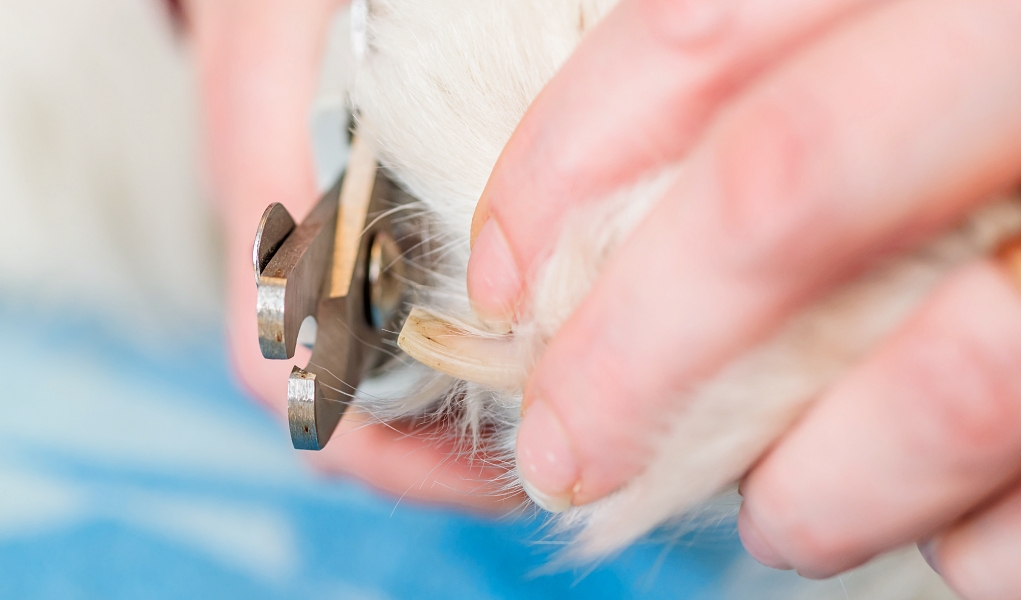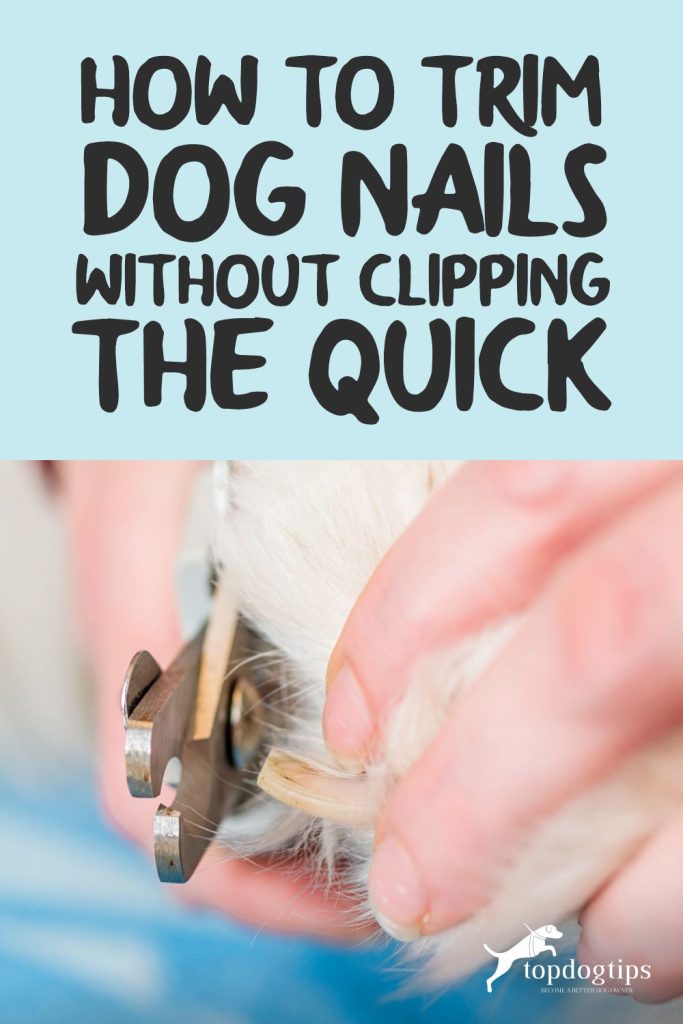Table of Contents
Are you scared to cut your dogs' nails yourself? Afraid you're going to clip the nail quick on accident? If so, you're not alone.
Lots of pet owners know how to trim dog nails, but they still visit a professional groomer because they're afraid to hurt their dog.
If your dog has white nails, it will be easy to see the pink quick through the nail. However, if your dog has black or brown nails, it will be impossible to tell exactly where the quick is.
If you snip the quick by mistake, it's nothing to stress about. Yes, it will be slightly painful for your dog.
You can compare it to how it feels when you clip your fingernail too short. It's painful, but not unbearable.
You should definitely learn how to trim dog nails without clipping the quick, but the fear of cutting a nail too short shouldn't stop you from performing this grooming task.
Hopefully, it won't happen often, but everyone – even the professionals – has clipped the nail quick at least once or twice.

How To Trim Dog Nails Without Clipping the Quick
Before I get started explaining how to trim dog nails – what is “the quick”? This is usually one of the first questions that I'm asked by pet owners when discussing this topic.
The quick run through the core of the nail. It contains blood vessels and nerves, which is why it is painful for your dog if you cut it on accident.
It will bleed quite a bit if you happen to knick it, but I'll discuss how to make it stop bleeding later in this article.
Supplies You'll Need To Trim Your Dogs Nails
I recommend putting together a “dog nail trimming kit” to keep all of the necessary supplies organized. Your kit should include:
- Traditional dog nail clipper or nail grinder (or both, if you'd prefer)
- Styptic powder or pen/gel (to stop the bleeding if you cut the quick)
- Sterile gauze pads (to clean excess blood before applying the styptic powder)
- Treats to reward your pup after the job is done
As you'll see in my video, I prefer to use traditional dog nail clippers. They're fast and easy to use.
You can purchase scissor-style clippers, like the ones in my video above, or a guillotine-style clipper.
Both of these dog nail clippers are typically made with stainless steel blades.
As the name suggests, you squeeze the handles of scissor-style clippers together and the blades clip the nail by coming together horizontally.
With guillotine-style clippers, the blades clip the nail vertically when you squeeze the handles together.
There really isn't much of a difference. It just depends on your personal preference and what's more comfortable for you.
You will also see me using a Dremel dog nail grinder (I've reviewed the newest version here). These are electric devices that file the nail down instead of clipping the tip-off.
I don't prefer these products, simply because it takes a lot longer to trim your dog's nails with a grinder than with traditional clippers. Some dogs are also scared of the noise and vibration made by nail grinders.
 Start Slowly to Avoid Cutting The Quick
Start Slowly to Avoid Cutting The Quick
It's best to start a regular dog grooming schedule as soon as you can. If you adopt a puppy, you should begin within just a few days of bringing your new furry family member home.
If you start from the beginning, he'll get used to this regular grooming practice quickly.
If you adopt an adult dog that is not used to having his nails clipped, it's certainly possible to get him comfortable with the practice, but it will take more time and a lot of patience.
Begin by getting your dog used to having his paws touched.
Watch my video above and note the way I hold my dog's paw. Hold your dog's paw in a similar way and practice separating the toes.
After he's comfortable with this feeling, you can begin touching your dog's toenails. Rub them and squeeze them so that he gets used to the feeling of pressure on his nails.
Then, when he seems comfortable with you touching his paw in different ways, you can bring out the nail clippers. No matter which type of clipper/trimmer that you use, show it to your dog and allow him to sniff it until he no longer seems interested.
When your pet is finished investigating the tool, move it around and near his toenails and touch the end of his nails with the device.
Now that your dog is used to you touching his paws and has become somewhat comfortable with the trimming device that you've chosen, you can begin to learn how to trim dog nails.
MORE: How To Sharpen Dog Nail Clippers
 How To Trim Dog Nails Without Cutting the Quick
How To Trim Dog Nails Without Cutting the Quick
My first piece of advice is don't be nervous. If you're nervous, your dog will sense it, and he'll be more nervous too.
Just relax and understand that if you trim your dog's nails too closely you may cause him a bit of pain. It's not a good thing, but certainly not the worst thing in the world.
Start by holding the paw firmly and then separate the toe that you'll be working with.
If you're using a Dremel nail grinder, turn it on and press it gently against the tip of your dog's nail. Shave off the tip until the nail is flat.













